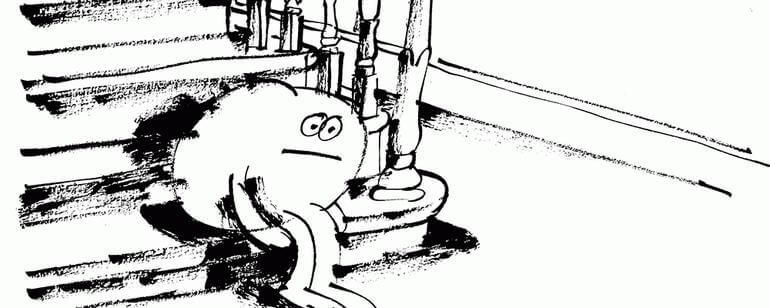
The New Confusion
Introducing Syllabus, our bi-weekly publication highlighting changes and shifts in human behaviour.
Faculty of Change is known for the high accuracy of our annual predictions (see 2021 and 2020). With how fast previously generational changes are occurring in the current environment, waiting a year to share predictions felt too long—so, in this bi-weekly publication, we’ll be highlighting expected changes and shifts in human behaviour that we’re watching. This time we tackle information overload, but in the coming weeks, you’ll hear about why startups are like professional wrestling, what Zoom has done for hair colour and the rise of toddler digital nomads. Scroll to the bottom of this email for quick hits of knowledge that are ready to be used in a meeting or at a dinner party.
The New Confusion
What is The New Confusion?
The New Confusion is characterized by disorientation, hidden manipulation, and the collapsing of categories or contexts—and, as a result, informed decision-making will become increasingly difficult.
The New Confusion will define how you’ll experience messages in the near future. The Great Blanding / Corporate Memphis aesthetic has been the dominant way of brands communicating. These aesthetics were easily recognizable by their minimalist style and concise copy.
With so many brands falling short of their promises, this has led to customers feeling the opposite about this type of marketing. The desired intent of the cleanliness and directness was that the simplicity would convey honesty. With minimalism, it is hard to hide and this makes the lie more obvious. But what if you do have something to hide? The emerging reality is that many companies do. As a company, they might push an aesthetic that makes it easier. Claims like “earth-friendly” or “brighter smile” are classic examples of the new confusion. A contemporary example is how Facebook paid a right-wing consulting agency to malign TikTok. This included falsely telling news outlets that there was a TikTok trend called “Slap Your Teacher.”
How does The New Confusion change individual mindsets?
This is more a prediction than a statement of observed behaviour. This type of confusion and distrust is likely to make inducing individuals to switch between providers or trust something new more difficult. You can expect the cost of advertising against trusted or reputable sources to get increasingly expensive.
Impact of The New Confusion will be blunted until the abatement of supply chain crises. If customers do not have as much choice, they will take what they can get.
How will The New Confusion impact future marketplaces?
Influencers will see a need to pivot from paid shill to “authority” that cuts through the noise. Taking ad dollars or free product will taint their influence. Those seeking the authority route will likely seek to monetize in different ways—paid subscriptions or leveraging that trust to create their own products.
What should market leaders consider to respond to The New Confusion?
Use purpose and mission to attract customers (vs. touted benefits). It is much easier for customers to verify an organization’s commitment to a purpose prior to purchase than it is to verify product claims. If you cannot trust an influencer’s bright smile, you need to buy the toothpaste to see if it works.
Communicate progress towards goals vs. just achieving them. Bringing customers into the journey shows transparency and allows them to see the work. This will better communicate purpose than a bunch of “mission accomplished” banners.
Conclusion: The New Confusion is a natural response to the ways in which consumers have been manipulated and lied to. The availability of more information has not stopped the lies and manipulation. It has just led to more of them. Finding ways to authentically break through these trust barriers is possible and desired by individuals. Just use your purpose. Need help defining that purpose? Happy to help.
Quick Hits:
Luxury - The growth of the luxury watch market feels like a symptom of rising inequality. Too many people with too much money looking for new ways to spend it. This fascinating explainer by Bartosz Ciechanowski is a great overview of the engineering that goes into making a mechanical watch.
The Hyperbolizing of Crowds - A recent YouGov study of 2000 Americans asked them to rate the prevalence of certain groups in society, with questions like, “What percentage of society do you think is Hispanic?” It is well worth a read, but the key takeaway is that “Americans tend to vastly overestimate the size of minority groups. This holds for sexual minorities, including the proportion of gays and lesbians (estimate: 30%, true: 3%), bisexuals (estimate: 29%, true: 4%), and people who are transgender (estimate: 21%, true: 0.6%).“
Retail - The rise of cultural oligopolies is being felt everywhere. Despite a world of theoretically-infinite choices, we are increasingly all gravitating towards the same stuff. This overview relates to cultural products, but there is great insight for retailers. There is still “weird” to be found. Discovery and curation are key to how to do that.



